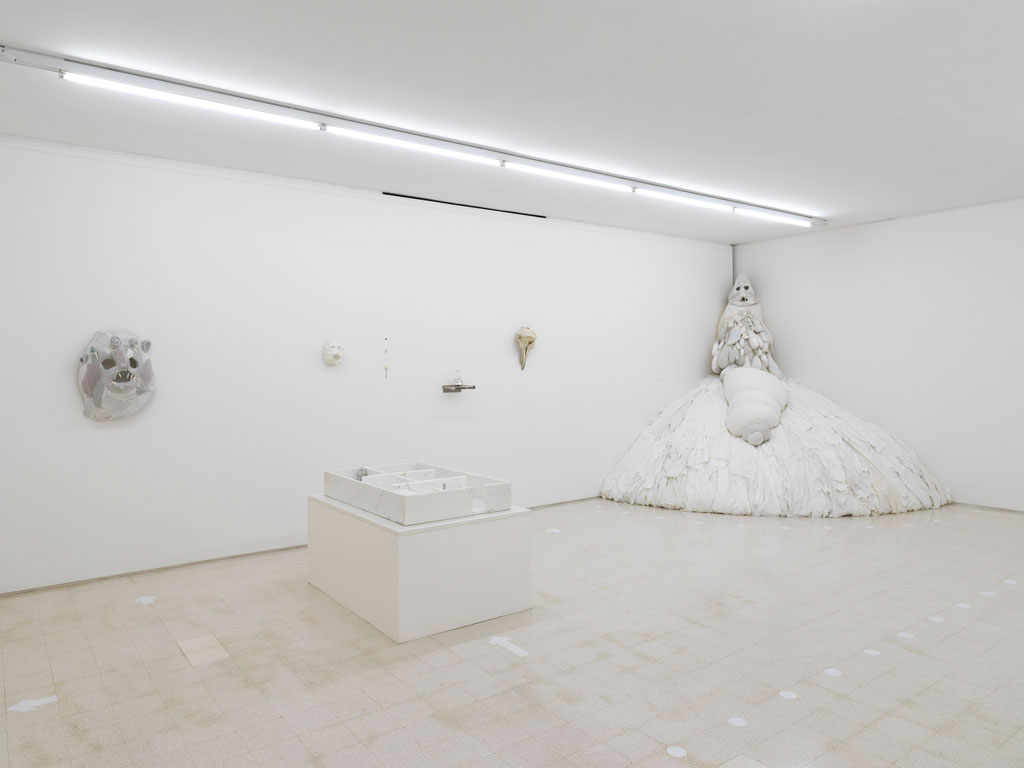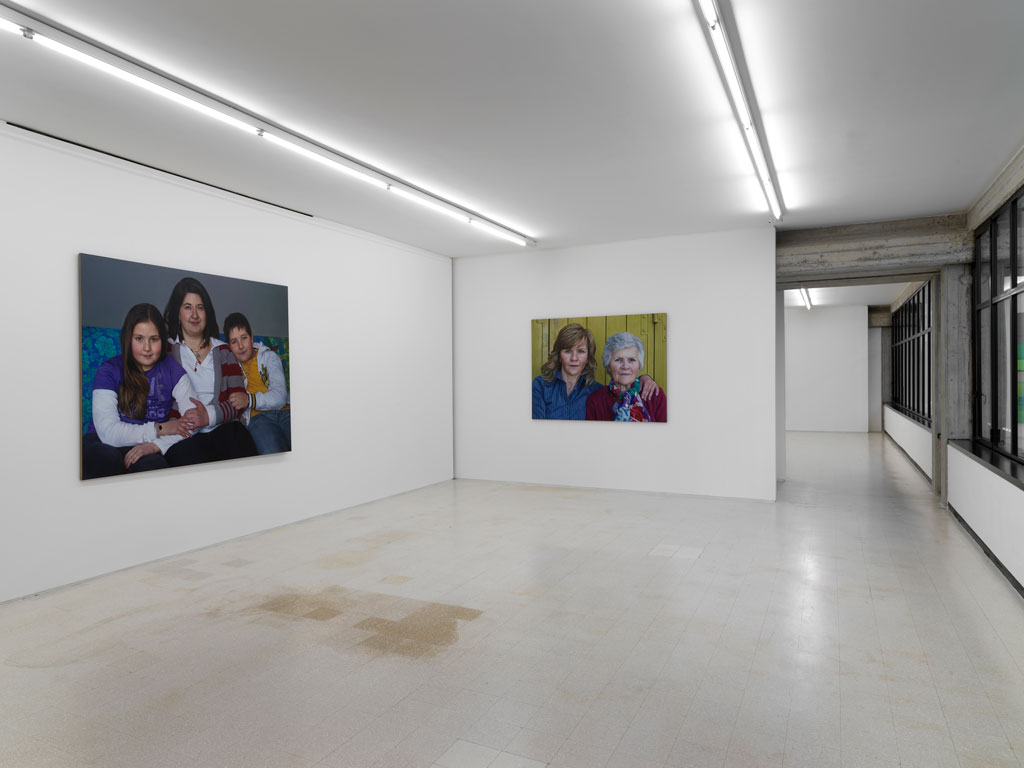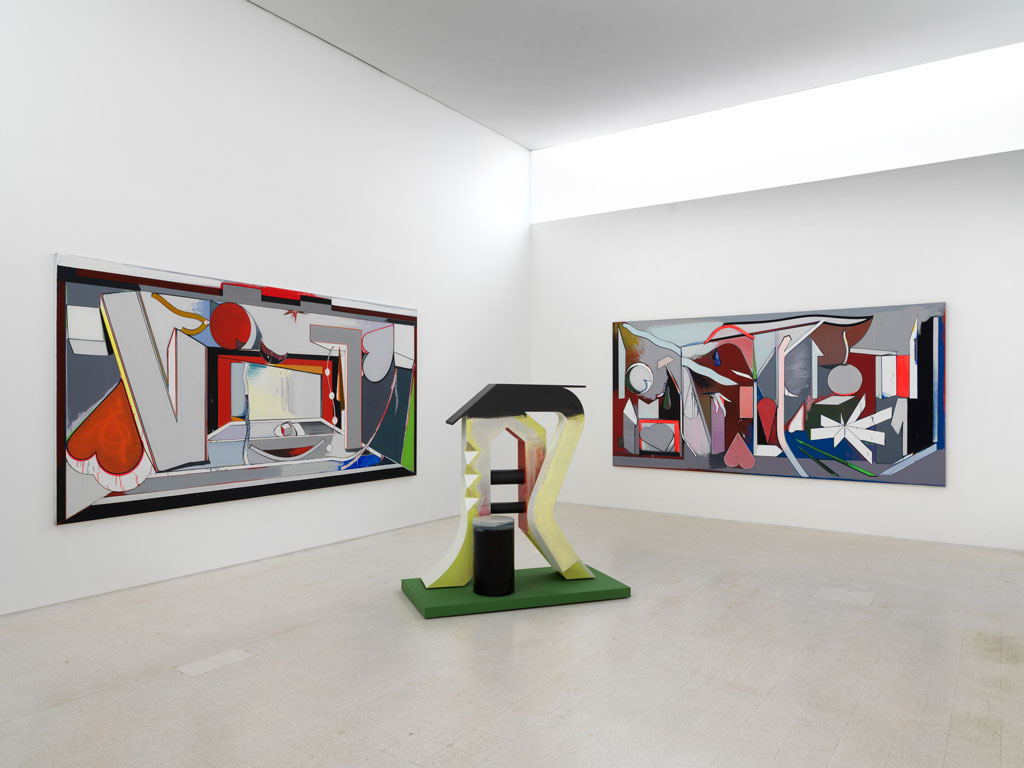ART-TRIBUTE:Rehang, Part I
 For the first time since the opening of Collezione Maramotti in October 2007, ten rooms on the second floor of the permanent display are rehung to present some of the projects shown during the first ten years of activity. Presented in a series of small solo exhibitions, the projects offer an overview, albeit partial, of the sustained work conducted by the Collezione to support Italian and international artists in a pivotal moment of their artistic research, by inviting them to create a new body of works to be displayed and, subsequently, to enter the collection (Part II).
For the first time since the opening of Collezione Maramotti in October 2007, ten rooms on the second floor of the permanent display are rehung to present some of the projects shown during the first ten years of activity. Presented in a series of small solo exhibitions, the projects offer an overview, albeit partial, of the sustained work conducted by the Collezione to support Italian and international artists in a pivotal moment of their artistic research, by inviting them to create a new body of works to be displayed and, subsequently, to enter the collection (Part II).
By Dimitris Lempesis
Photo: Collezione Maramotti Archive
The new exhibition entitld “Rehang” itinerary reflects an interest in the evolution of the pictorial language, an attention to new forms of expression and in questioning the status quo of the artwork, while striving to offer a vision through which future trends can be acknowledged. The artist that their projects are on presentation are: Enoc Perez, Gert & Uwe Tobias, Jacob Kassay, Krištof Kintera , Jules de Balincourt , Alessandro Pessoli, Evgeny Antufiev, Thomas Scheibi, Chantal Joffe and Alessandra Ariatti. The “Rehang” (which is also a moment of reflection on the Collezione and its development) is accompanied by a temporary exhibition on the ground-floor, presenting documents, books and works from the Collezione’s archives and library. Through relevant examples, these materials highlight the vitality of the creative process of artworks and the connections between the various groups of elements that form the collection. “Casa Malaparte” by Enoc Perez was the first project exhibited in 2008. Two large canvases – made with a complex, layered painting process, without the use of a brush –interrogate the role of painting today, reworking the Casa icon of Italian modernist architecture. Perez’s research on 1920s-1950s architecture investigates the transfiguration of the buildings of the time in the collective imagination: metaphors of power, beauty and optimism towards the future, marked with nostalgia and disappointment for vanished dreams.The room housing the project by Gert & Uwe Tobias (2009) displays large scale xylographies, drawings and sculptures. These works blend iconic elements drawn from the popular culture of the artists’ country of origin (Transylvania), images of European folklore and a contemporary formal language which finds its artistic predecessors in the early Modernism, in Klee, Constructivism and Art Brut. With its strong visual consistency, the work of the Tobias twins combine an extraordinary immediacy with an ironic post-modern tendency to quoting the past. In 2010, emerging artist Jacob Kassay made a series of ‘silvery’ and mirror-like canvases which hold the ghostly presence of the underlying painting while absorbing and reflecting the surroundings. The conceptual elements of monochromatism, objectivisation of paint pigments, the reflection on colour, movement and shape become the focus of his research, and are codified into the original metaphysics of the painted surface, in an abstraction with a reference to photography. The large installation “Postnaturalia” is part of a wider project which Krištof Kintera created for the Collezione in 2017. A playful but also bitter reflection on the relationship between Nature, science and technology, within the framework of a complex social and political exploration of the present time Kintera’s room hosts a synthetic carpet of plants growing out of an intricate root system made in copper, a series of islands all linked together through pathways which visitors can follow. The artificial light of the room fosters the growth of these synthetic plants. For the exhibition “Parallel Universe” (2012) Jules de Balincourt painted several panels, in dialogue with each other and all outcome of a simultaneous creative process. These works can be interpreted as a map of components which are freely interlinked, aiming at exploring and recording the developing relationship between representation, abstraction and pictorial gesture. De Balincourt’s work focuses on the concept of polarity in terms of power and energy, as expressed by a strongly intuitive approach to painting. The three large canvases created by Alessandro Pessoli in 2011 evocatively reference each other and find their common ground, their “pilot light”, their fil rouge, in the complex theme of Crucifixion. Pessoli’s painting is eclectic, rich in memories and historical notes (from Metaphysics to Surrealism, to popular visual culture) with which the artist maintains an empatethic contact, perfectly succeeding in internalising the sense of continuity in art history. In this project, the images belonging to a religious iconographic tradition are being modernised and turned into bearers of potential figural reinventions. The room dedicated to Evgeny Antufiev presents works from his project “Twelve, wood, dolphin, knife, bowl, mask, crystal, bones and marble – fusion. Exploring materials” (2013), a large and articulated exhibition itinerary created by the artist as a transformative perception experience for visitors, where materials and objects shed their identities to return into an archetypal dimension. Antufiev uses diverse materials – fabrics, crystals, bones, insects, marble, wood – and objects apparently unrelated, but nevertheless inter-weaving together inside his installations through a process recalling alchemical operations and shamanistic practices. “Il fiume e le sue fonti”, the project conceived by Thomas Scheibitz in 2011, includes three large abstract canvasses recalling the set and plastic elements seen in the Suprematist theatre and Bauhaus, and a sculpture that appears as a monumental version of a hieroglyphic, extrapolated from an unknown language. In the complex compositional structure of Scheibitz’s works, different iconic elements represent abstract, para-geometrical transpositions of figures and signs drawn from the collective imagery that visual culture and media, from advertising to cinema, make available to us. In 2014 the Collezione presented “Ritratto di donne”, comprising two projects, “Moll” by Chantal Joffe and “Legami” by Alessandra Ariatti, artists who have focused their artistic research on portraiture, a figurative tradition that has been constantly present in the arts from the 15th century to the present day. “Moll” by Chantal Joffe represents a somewhat obsessively single figure with fluid brush strokes that blend together the details of the face, clothes and location in a single pictorial flow. In this group of works the subject is the artist’s niece, sixteen years old at the time, an age when the inner dimension is full of dreams and at the same time of inscrutable mystery. This existential circumstance may be extended to the way the artist presents female identity in general, with an “ambiguity” that generates complexity. Alessandra Ariatti paints groups of figures with a hyper-photographic precision, which is functional to her in-depth psychological investigation and analysis of human interrelations. Through her slow methodical practice, the artist is interested in highlighting the relationship between the subjects of the works and herself, while creating a dialogue with the viewers.
Info: Collezione Maramotti, Via Fratelli Cervi 66, Reggio Emilia, Duration: 3/9/18- , Days & Hours: Thu-Fri 14:30-18:30, Sat-Sun 10:30-18:30, www.collezionemaramotti.org






